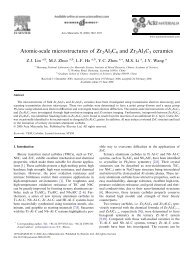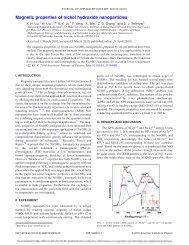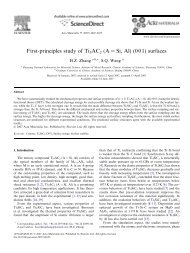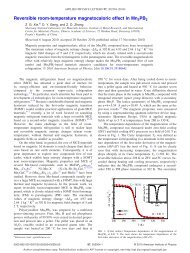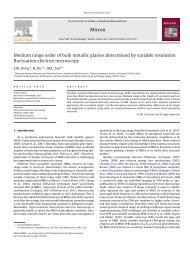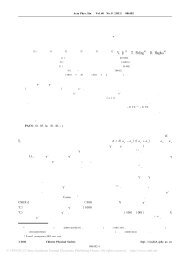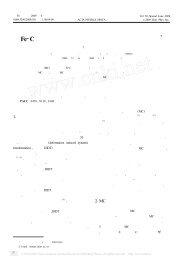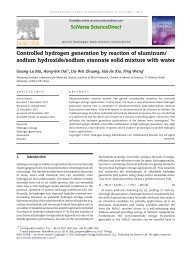Magnetic anisotropy and metal-insulator transition in SrRuO3 thin ...
Magnetic anisotropy and metal-insulator transition in SrRuO3 thin ...
Magnetic anisotropy and metal-insulator transition in SrRuO3 thin ...
Create successful ePaper yourself
Turn your PDF publications into a flip-book with our unique Google optimized e-Paper software.
113925-3 Wang et al. J. Appl. Phys. 107, 113925 2010<br />
FIG. 2. Color onl<strong>in</strong>e 3D AFM images of raw SRO substrate <strong>and</strong> SRO films grown at different temperatures a 600 °C, b 650 °C, c 700 °C, <strong>and</strong> d<br />
750 °C.<br />
750 °C. This <strong>in</strong>dicates that the film surface first becomes<br />
rough <strong>and</strong> then smooths as <strong>in</strong>creased growth temperature<br />
provides more bond energy.<br />
Figures 3a–3d show magnetic hysteresis loops of<br />
SRO films grown at different temperatures <strong>in</strong> the OOP <strong>and</strong><br />
the IP directions at 10 K. The <strong>in</strong>set of Fig. 3d shows the<br />
growth temperature dependence of the magnetic moment recorded<br />
at 30 kOe 1 Oe equals about 80 A/m <strong>in</strong> the OOP<br />
direction at 10 K. <strong>Magnetic</strong> <strong>anisotropy</strong> is <strong>in</strong> the OOP direction<br />
for the film grown at 750 °C, <strong>in</strong> agreement with Refs.<br />
12 <strong>and</strong> 13. With decreas<strong>in</strong>g growth temperature, the magnetic<br />
<strong>anisotropy</strong> becomes less pronounced <strong>and</strong> more of the<br />
magnetization rotates <strong>in</strong>to the IP direction. F<strong>in</strong>ally, magnetic<br />
isotropy is found <strong>in</strong> the film grown at 600 °C, due to more<br />
<strong>in</strong>duced stra<strong>in</strong> <strong>in</strong> films grown at lower temperatures. Similar<br />
phenomena was also reported <strong>in</strong> other systems such as<br />
CoFe 2 O 4 film, 14 where magnetic <strong>anisotropy</strong> is <strong>in</strong> the IP with<br />
lower temperature growth, <strong>and</strong> an <strong>in</strong>crease <strong>in</strong> growth temperature<br />
shows more magnetization rotat<strong>in</strong>g from IP <strong>in</strong>to<br />
OOP due to stra<strong>in</strong> relaxation. This is <strong>in</strong> agreement with the<br />
Downloaded 09 Jul 2010 to 210.72.130.85. Redistribution subject to AIP license or copyright; see http://jap.aip.org/jap/copyright.jsp



